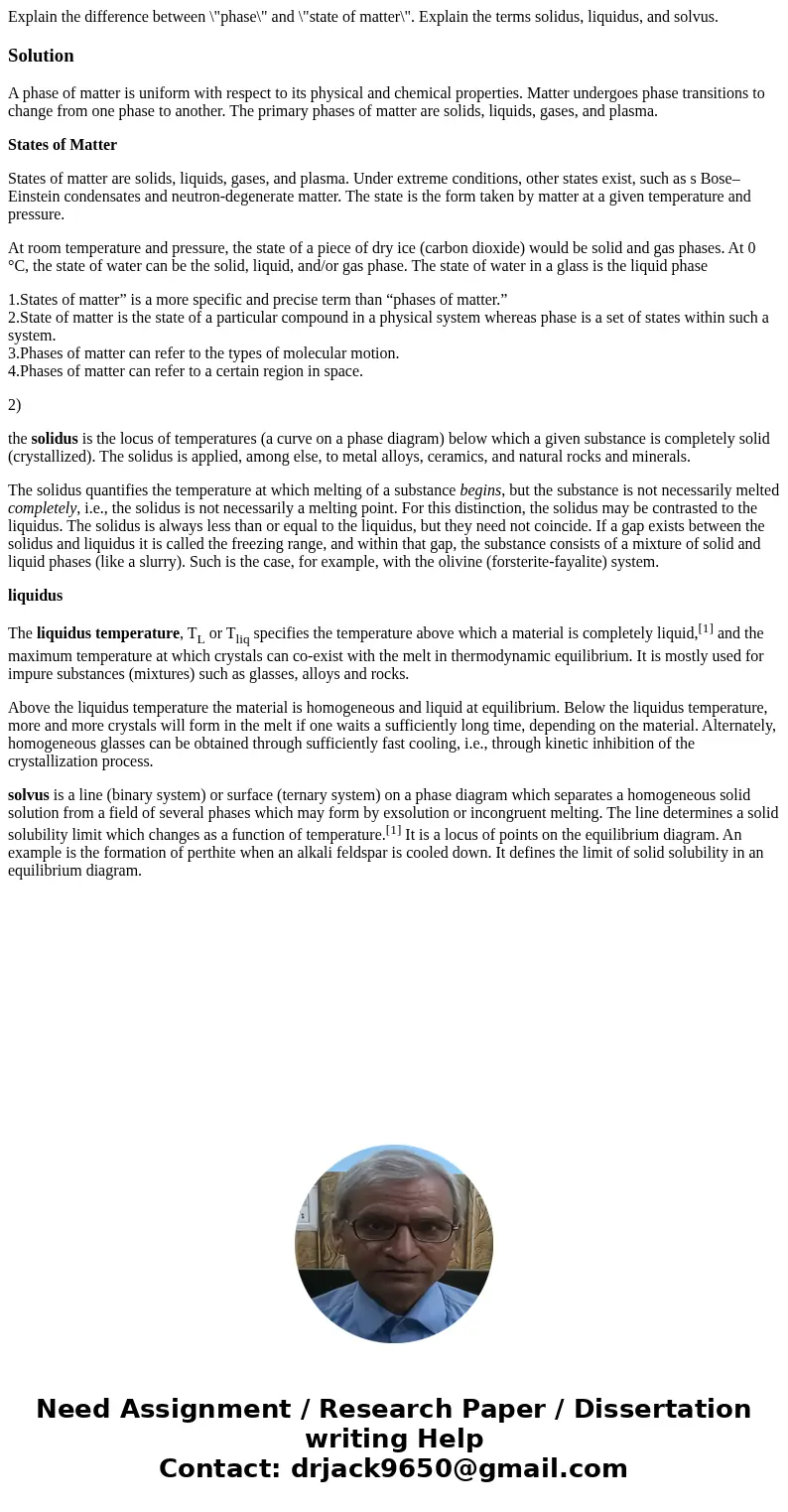Explain the difference between phase and state of matter Exp
Solution
A phase of matter is uniform with respect to its physical and chemical properties. Matter undergoes phase transitions to change from one phase to another. The primary phases of matter are solids, liquids, gases, and plasma.
States of Matter
States of matter are solids, liquids, gases, and plasma. Under extreme conditions, other states exist, such as s Bose–Einstein condensates and neutron-degenerate matter. The state is the form taken by matter at a given temperature and pressure.
At room temperature and pressure, the state of a piece of dry ice (carbon dioxide) would be solid and gas phases. At 0 °C, the state of water can be the solid, liquid, and/or gas phase. The state of water in a glass is the liquid phase
1.States of matter” is a more specific and precise term than “phases of matter.”
2.State of matter is the state of a particular compound in a physical system whereas phase is a set of states within such a system.
3.Phases of matter can refer to the types of molecular motion.
4.Phases of matter can refer to a certain region in space.
2)
the solidus is the locus of temperatures (a curve on a phase diagram) below which a given substance is completely solid (crystallized). The solidus is applied, among else, to metal alloys, ceramics, and natural rocks and minerals.
The solidus quantifies the temperature at which melting of a substance begins, but the substance is not necessarily melted completely, i.e., the solidus is not necessarily a melting point. For this distinction, the solidus may be contrasted to the liquidus. The solidus is always less than or equal to the liquidus, but they need not coincide. If a gap exists between the solidus and liquidus it is called the freezing range, and within that gap, the substance consists of a mixture of solid and liquid phases (like a slurry). Such is the case, for example, with the olivine (forsterite-fayalite) system.
liquidus
The liquidus temperature, TL or Tliq specifies the temperature above which a material is completely liquid,[1] and the maximum temperature at which crystals can co-exist with the melt in thermodynamic equilibrium. It is mostly used for impure substances (mixtures) such as glasses, alloys and rocks.
Above the liquidus temperature the material is homogeneous and liquid at equilibrium. Below the liquidus temperature, more and more crystals will form in the melt if one waits a sufficiently long time, depending on the material. Alternately, homogeneous glasses can be obtained through sufficiently fast cooling, i.e., through kinetic inhibition of the crystallization process.
solvus is a line (binary system) or surface (ternary system) on a phase diagram which separates a homogeneous solid solution from a field of several phases which may form by exsolution or incongruent melting. The line determines a solid solubility limit which changes as a function of temperature.[1] It is a locus of points on the equilibrium diagram. An example is the formation of perthite when an alkali feldspar is cooled down. It defines the limit of solid solubility in an equilibrium diagram.

 Homework Sourse
Homework Sourse